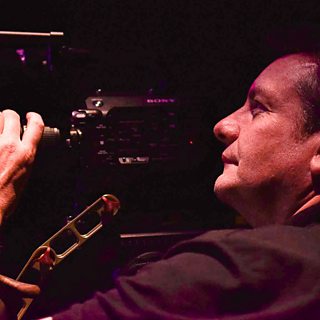
Every year broadcasters and manufacturers from across the globe get together to discuss the future trends that will drive the industry.
This year I was lucky enough to join over 103,000 attendees from 187 countries to wander the million square feet of exhibition space, admire the wares of 1847 companies and attend conference sessions on a very wide range of subjects.
This will be the first of two blog posts looking at NAB 2016. The first will cover areas where BBC R&D has impacted on the wider industry and the follow-up will be on other industry trends.
Regular readers of this blog will know that one of the key areas we have been investigating is the impact of using IT tools to produce content rather than bespoke technologies designed and built especially for the broadcast market.
The benefits of this approach means we can start to harness the power of the Internet to produce more content, more efficiently and distribute it to a wider audience on a number of different devices.At previous trade shows we have seen some move towards this, mostly with a concentration on contribution or distribution of signals rather than production itself.
This year, for the first time we saw the industry come together to agree on a common approach that could revolutionise the way we make and consume content.BBC R&D DNA runs through the very heart of this approach and we are starting to see a way of designing and integrating broadcasting systems that we have been advocating for a while become a reality.
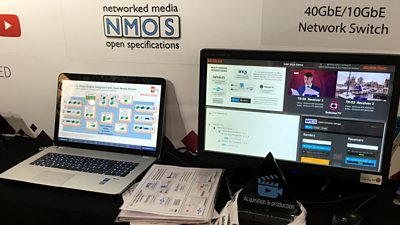
For a few years now BBC R&D have been working with the JTNM to define an suitable architecture for future IP Production infrastructure and in September 2015 at IBC, BBC R&D got together with a group of companies under the AMWA umbrella to form the Networked Media Incubator to prove that kit from various manufacturers can operate together over packet based networks. All of this work is to create open frameworks and standards that the industry can adopt.This year at NAB we saw a commitment from more than 30 manufacturers to work in this way and make production equipment that may finally help us move to an IP production environment that both unlocks new content experiences and increases the productivity of production.
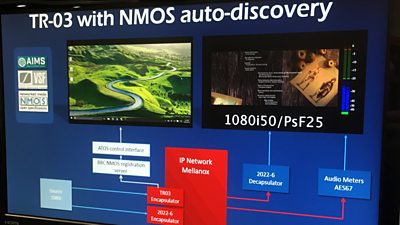
AIMS (Alliance for IP Media Solutions) is a marketing group that promotes the use of open standards for IP Production and this year their logo was everywhere, over 30 companies are now signed up to the alliance that are actively promoting the work from the AMWA and VSF for which our IP Studio team have been the amongst the key thought leaders.But the impact of BBC R&D’s work did not stop at IP Production. One of the other key themes of this year’s show was High Dynamic Range (HDR) video.
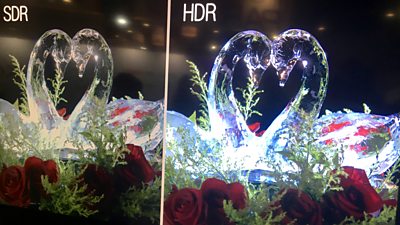
HDR enables us to get more contrast from a video signal, which gives more depth and clarity to the images you will see at home.One of the key challenges we face as a broadcaster is how we might be able to make and distribute content that works for both HDR and standard dynamic range content.To overcome the challenge BBC R&D has worked with the Japanese broadcaster NHK to help develop a system that can meet this challenge and have created a system called Hybrid Log Gamma.This year at NAB we saw a number of companies incorporating HLR in their workflows and displays meaning that HDR is a step nearer to being delivered to our homes.
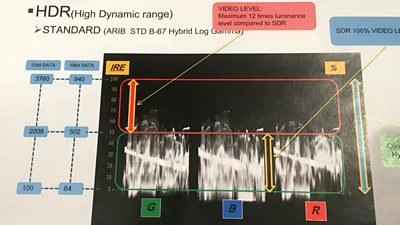
R&D's Tim Borer also presented a paper to the conference about the conversion of one HDR system to another, which will be key to enable content to become available.NAB 2016 also saw the first mention of object based production by a vendor. Broadcast Bionics were showing their radio studio implementation which demonstrates how object based working can increase the productivity of radio production by recording studio events and multitrack audio and making these all available at later stages in the production process.

These developments are significant progress for IP production and validates the approach we have taken.Broadcasters from across the globe are looking to IP for the next generation of production systems and pushing the manufacturers to provide tools that enable new capabilities beyond that which we have within the existing broadcast infrastructure. At NAB 2016 we saw a shift away from cable replacement to systems that can not only achieve what we currently do, but have the capabilities to enhance services we could provide to our audiences of the future.
Topics
Search by Tag:
- Tagged with Blog Blog
- Tagged with Production Production
- Tagged with IP Production and Broadcast IP Production and Broadcast
